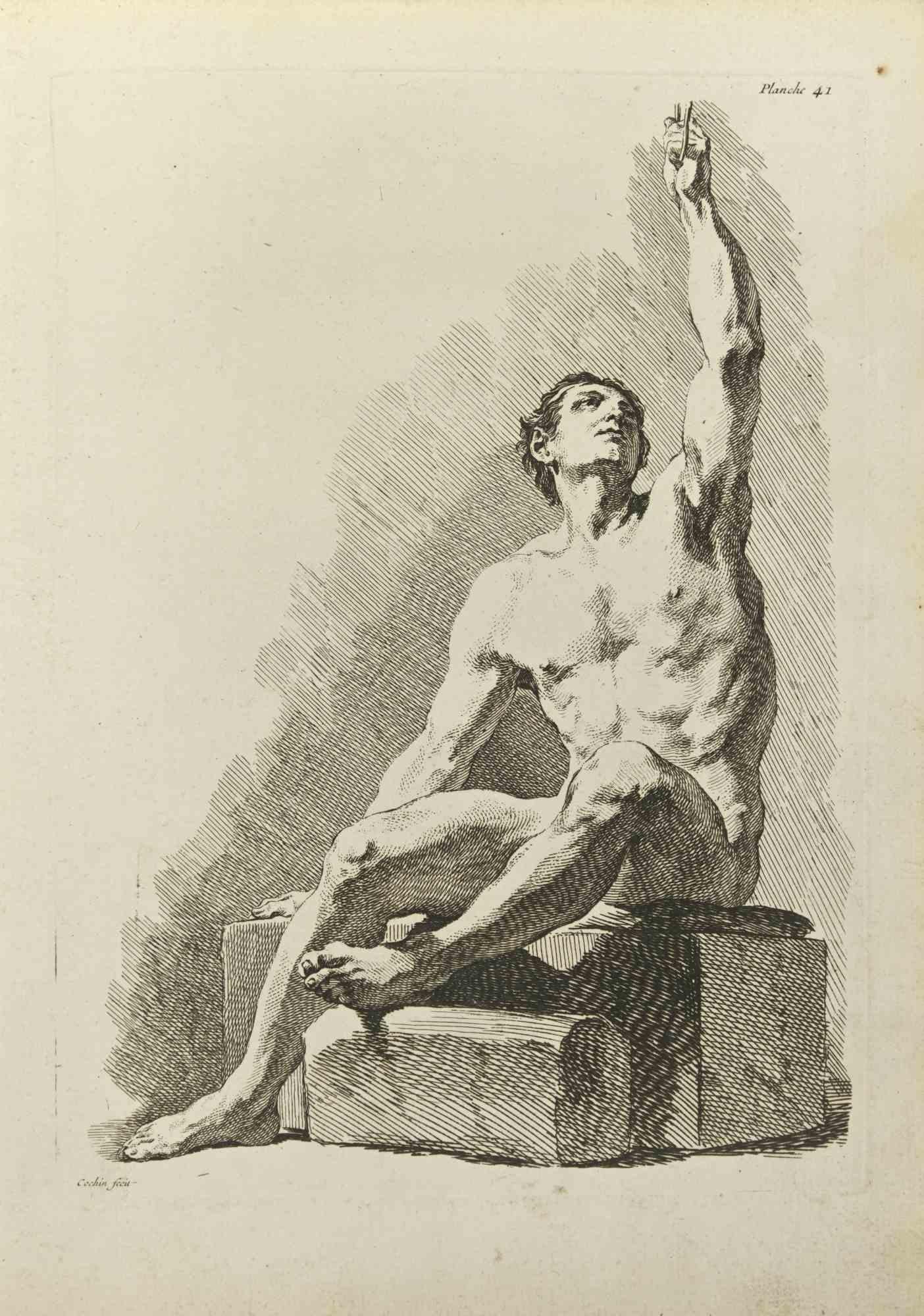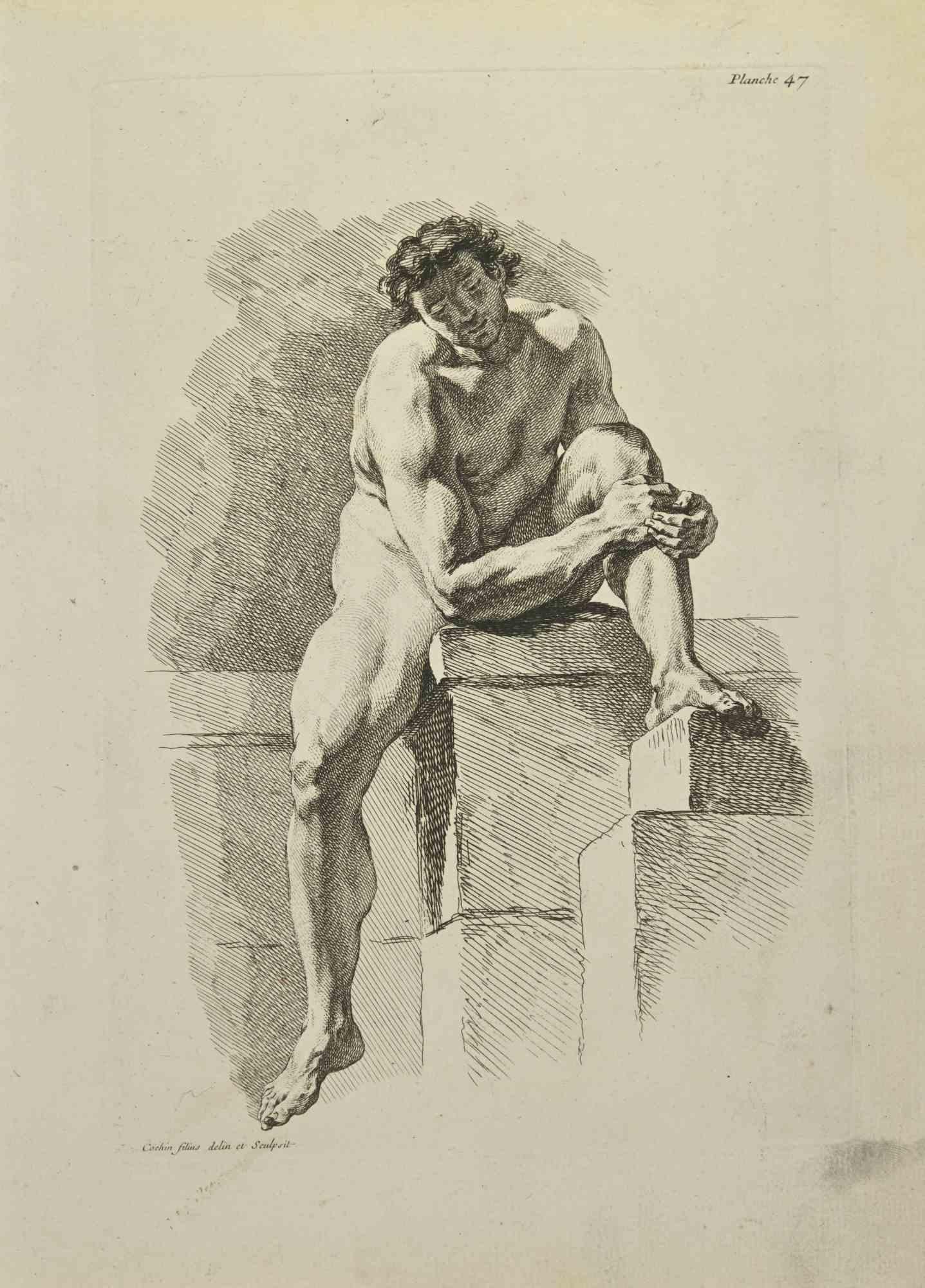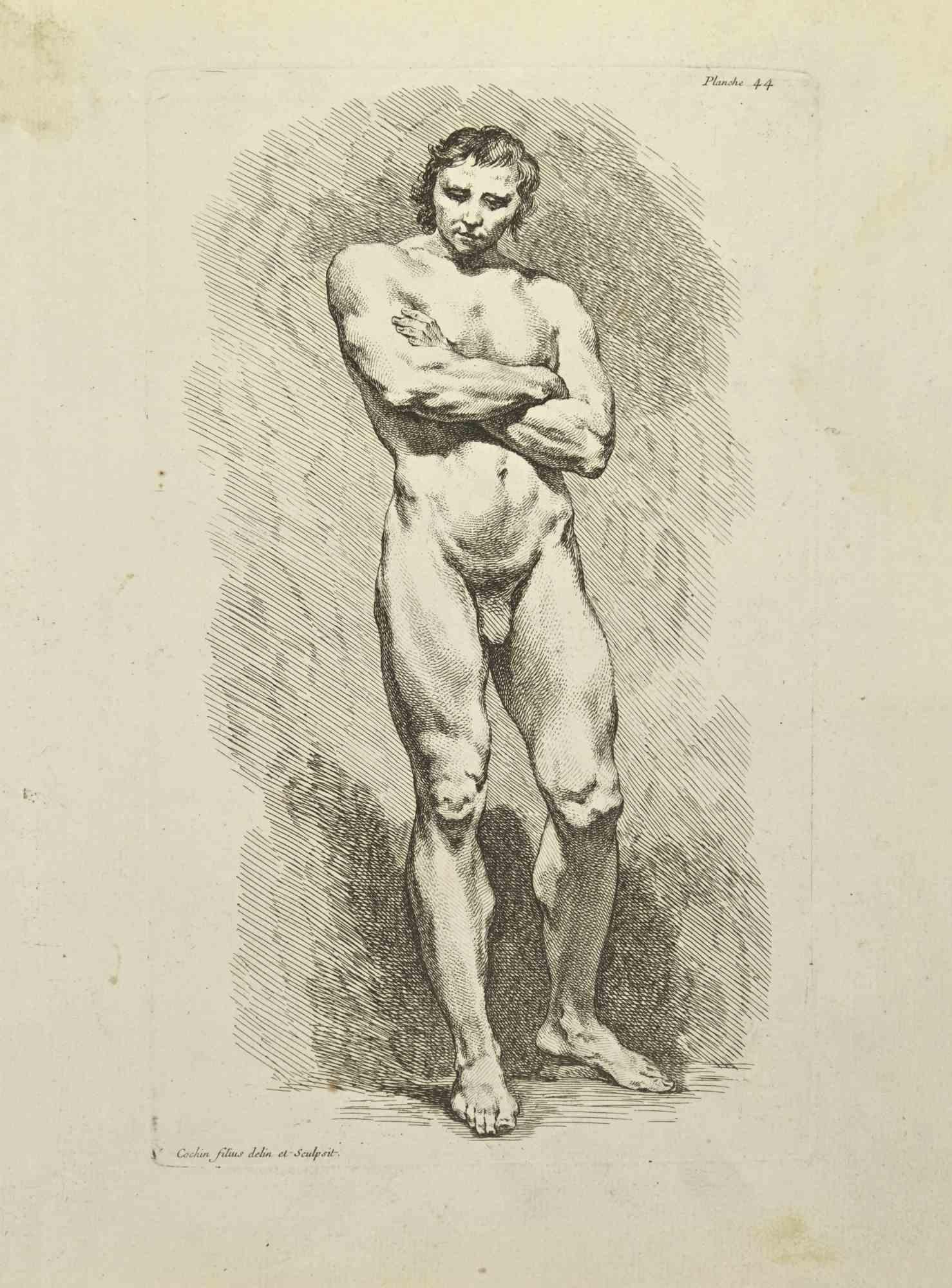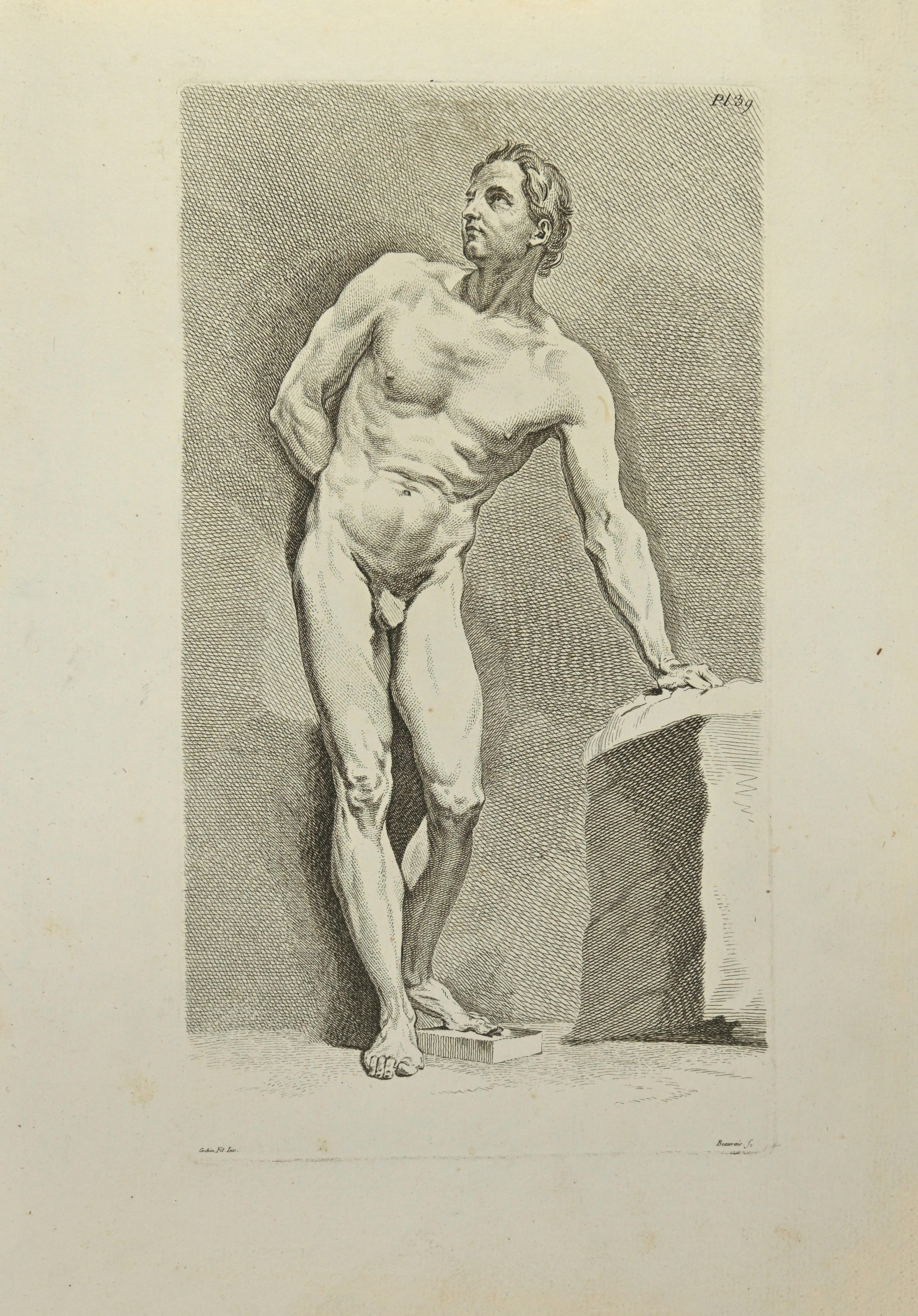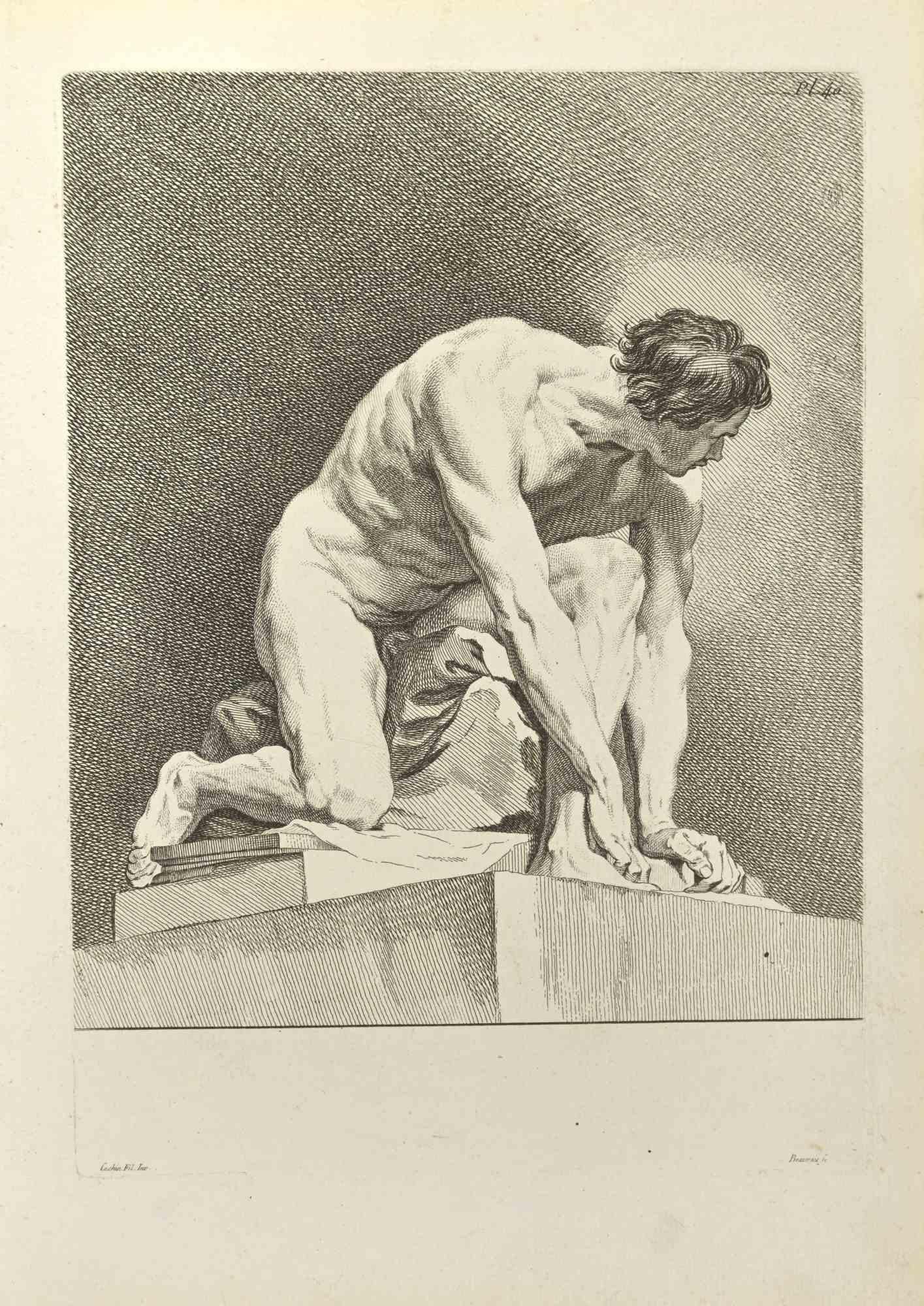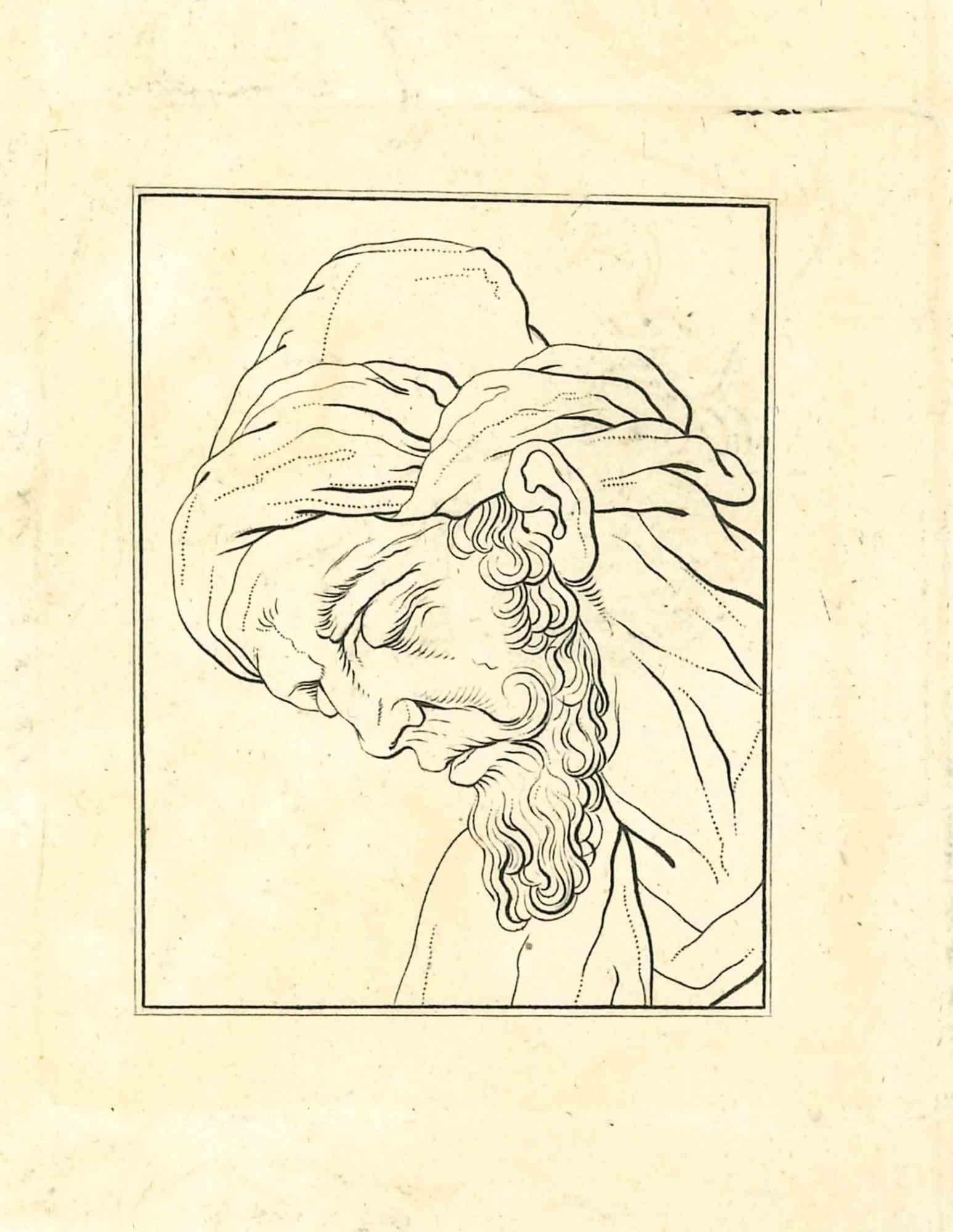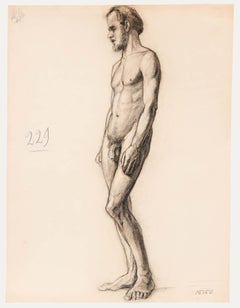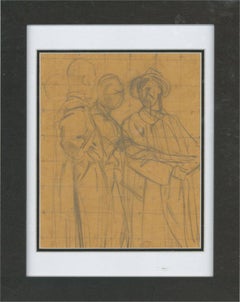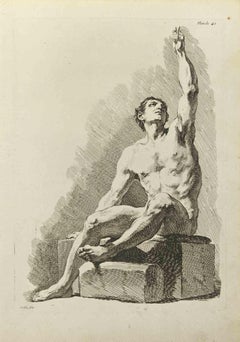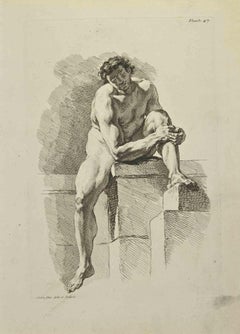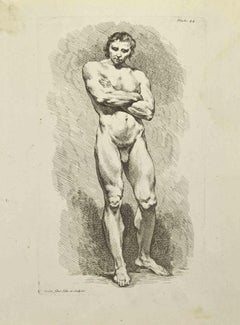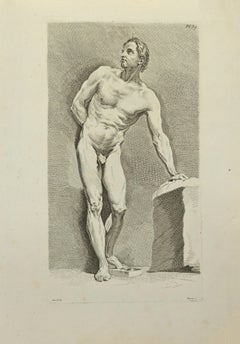Items Similar to William Strang RA (1859-1921) - Etching, Life Model in the Studio
Want more images or videos?
Request additional images or videos from the seller
1 of 6
William Strang, R.A., R.E.William Strang RA (1859-1921) - Etching, Life Model in the StudioUnknown
Unknown
$440
£339.19
€385.53
CA$626.94
A$682.04
CHF 359.90
MX$8,202.72
NOK 4,540.03
SEK 4,225.22
DKK 2,879.26
About the Item
An original etching by William Strang depicting a male life model in the artist's studio. Signed in plate and signed in pencil to the lower margin. Further inscribed to the lower left hand corner. On paper.
- Creator:William Strang, R.A., R.E. (1859 - 1921, British)
- Creation Year:Unknown
- Dimensions:Height: 11.42 in (29 cm)Width: 8.08 in (20.5 cm)
- Medium:
- Period:
- Condition:Minor discolouration to the paper. The overall condition of the print is good.
- Gallery Location:Corsham, GB
- Reference Number:Seller: sn4971stDibs: LU881316761742
About the Seller
4.9
Gold Seller
Premium sellers maintaining a 4.3+ rating and 24-hour response times
Established in 2010
1stDibs seller since 2018
1,438 sales on 1stDibs
Typical response time: 2 hours
- ShippingRetrieving quote...Shipping from: Corsham, United Kingdom
- Return Policy
More From This Seller
View AllPierre Neveu (b.1929) - Mid 20th Century Graphite Drawing, Male Life Study
By Pierre Neveu
Located in Corsham, GB
A delicate life study by the artist Pierre Neveu (b.1929). Signed to the lower right. On laid.
Category
20th Century Nude Drawings and Watercolors
Materials
Graphite
William Lee-Hankey (1869-1952) - Early 20th Century Aquatint, The Darby Prayer
By William Lee Hankey
Located in Corsham, GB
A dark and atmospheric aquatint with etching by William Lee-Hankey. Monogrammed within the plate. Signed in pencil to the lower margin. On paper.
Category
20th Century Figurative Prints
Materials
Aquatint
Reginald Brill (1902-1974) - 1931 Pen and Ink Drawing, Reclining Nude
By Reginald Brill
Located in Corsham, GB
A striking ink study by the artist Reginald Brill (1902-1974) depicting a reclining nude lady. The artist expertly uses hatching to create this wonderfully tonal piece and captures t...
Category
Early 20th Century Nude Drawings and Watercolors
Materials
Pen
Alfred Kingsley Lawrence RA (1893-1975) - Graphite Drawing, Figure Study
By Alfred Kingsley Lawrence RA
Located in Corsham, GB
A fine graphite study by the British artist Alfred Kingsley Lawrence, depicting a study of three figures. Unsigned. Well-presented in a white on black double card mount and in a simp...
Category
Mid-20th Century Portrait Drawings and Watercolors
Materials
Graphite
Attrib. Gordon Browne RI, RBA (1858-1932) - c.1913 Pen & Ink Drawing, Mr. Craig
Located in Corsham, GB
A pen and ink drawing attributed to the well known British artist Gordon Frederick Browne. Label to the reverse reads 'Gordon Frederick Browne RI, RB (1858-1932) Son of 'Phiz'. Exhib...
Category
20th Century Figurative Drawings and Watercolors
Materials
Pen
Sir Muirhead Bone (1876-1953) - 1927 Etching, Rev. Dr. Herbert Armitage James
By Sir Muirhead Bone
Located in Corsham, GB
A rare and highly accomplished drypoint etching by the Scottish etcher and war artist during both world wars, Sir Muirhead Bone (1876-1953), of Rev. Dr. Herbert Armitage James (1844-1931), the headmaster of Rugby School...
Category
20th Century Portrait Prints
Materials
Etching
You May Also Like
Posing Man - Etching by Nicholas Cochin - 1755
Located in Roma, IT
Posing Man is an etching realized by Nicholas Cochin in 1755.
Good conditions with foxing on the margins.
Signed in the plate.
The etching was realized for the anatomy study “JOMB...
Category
18th Century Old Masters Figurative Prints
Materials
Etching
$213 Sale Price
40% Off
Anatomy Studies - Etching by Nicholas Cochin - 1755
Located in Roma, IT
Anatomy Studies is an etching realized by Nicholas Cochin in 1755.
Good conditions with foxing and folding.
Signed in the plate.
The artwork is depicted through confident strokes....
Category
1750s Surrealist Figurative Prints
Materials
Etching
$185 Sale Price
40% Off
Anatomy Studies - Etching by Nicholas Cochin - 1755
Located in Roma, IT
Anatomy Studies is an etching realized by Nicholas Cochin in 1755.
Signed in the plate.
Good conditions with foxing and folding.
The artwork is depicted through confident strokes....
Category
1750s Surrealist Figurative Prints
Materials
Etching
Figure - Etching by Nicolas-Dauphin de Beauvais - 18th Century
Located in Roma, IT
Anatomy Studies is an etching realized by Nicolas-Dauphin de Beauvais in the 18th Century.
Good conditions with foxing.
Signed on plate.
The artwork is depicted through confident ...
Category
18th Century Modern Figurative Prints
Materials
Etching
Posing Man - Etching by Nicholas Cochin - 1755
Located in Roma, IT
Posing Man is an etching realized by Nicholas Cochin in 1755.
Good conditions with foxing on the margins.
Signed in the plate.
The etching was realized for the anatomy study “JOMB...
Category
18th Century Old Masters Figurative Prints
Materials
Etching
$213 Sale Price
40% Off
Portrait of a Man - Etching by Thomas Holloway - 1810
By Thomas Holloway
Located in Roma, IT
Portrait of a man is an original etching artwork realized by Thomas Holloway for Johann Caspar Lavater's "Essays on Physiognomy, Designed to Promote the Knowledge and the Love of Man...
Category
1810s Modern Figurative Prints
Materials
Etching
